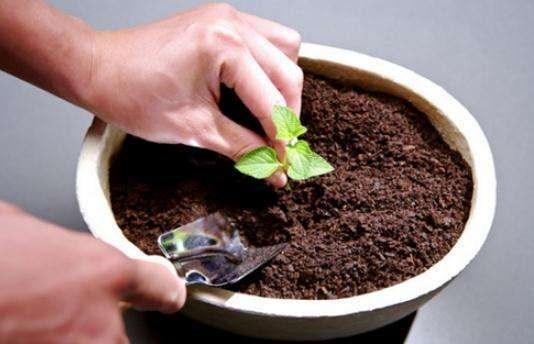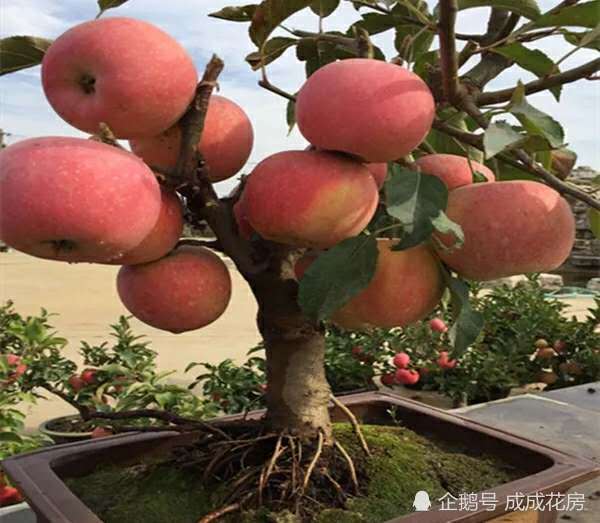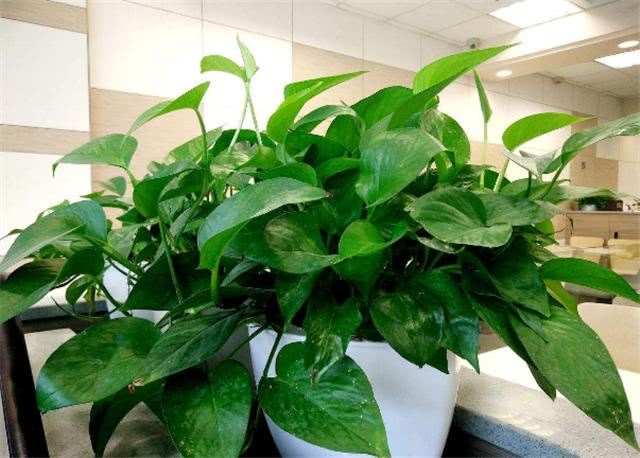Autumn flowers need good fertilizer how to fertilize in order to get twice the result with half the effort?

In October, plants should also be "put on autumn fat". In the folk, there is a saying that "gold in autumn and silver in winter". The plant will enter the winter dormancy period, and the amount of nutrients stored in the plant will have a direct impact on the growth and flowering of the second year. What is the difference between fertilizing in autumn and fertilizing in spring? What is the best way to fertilize? What kind of fertilizer should be applied?
First, what is the difference between autumn fertilization and spring fertilization?
The difference between spring and autumn fertilization lies in whether the effect is good or bad. fertilization in spring is often not as effective as fertilization in autumn, and sometimes it is counterproductive. The temperature is low in winter and spring, and the decomposition of fertilizer is slow. If organic fertilizer is applied during this period, the fertilizer can not be brought into full play.
Fertilization in October is beneficial to increase the storage of plant nutrients, and autumn is the last peak of root growth in a year, with strong life activities and strong ability to absorb nutrients.
Second, the combination of organic fertilizer and inorganic fertilizer is the best scheme of fertilization.
The types of fertilizers can be simply divided into organic fertilizer and inorganic fertilizer.
Organic fertilizer is a fertilizer that contains a lot of organic matter. Mainly from plants or animals, from animal and plant waste, plant residue processing, rich in a large number of organic matter and nitrogen, phosphorus, potassium and other nutrient elements. To put it simply, organic fertilizer is what we often say, such as chicken dung, bone meal and sheep dung. In terms of form, it is solid fertilizer, which belongs to long-acting fertilizer.
And inorganic fertilizer is what we call chemical fertilizer, that is, our common slow-release fertilizer and liquid fertilizer, the effective composition is high, most of them are soluble in water, easy to be absorbed by plant roots, fertilizer effect belongs to quick-acting fertilizer.
We have a general understanding of organic fertilizer and inorganic fertilizer, but there are so many kinds of organic fertilizer and inorganic fertilizer, which one should we choose?
Third, which organic fertilizer should be chosen and how to use it?
If your flowers and plants are in the stage of sowing or transplanting, this stage is the time to develop your organic fertilizer.
1. Chicken manure
Chicken dung is most suitable for woody flowers, jasmine, gardenia, sweet-scented osmanthus, camellia, rhododendron, rose and so on. It can be regarded as a kind of high-quality organic fertilizer, but the chicken manure must be cooked and used again. Nutrient content is very rich, nitrogen, phosphorus and potassium content is very high, equivalent to 5-6 times the content of cow manure, so chicken manure is not small.
Use chicken dung, you can sprinkle a thin circle along the edge of the basin or spread it directly on the surface of the basin soil, do not touch the seedlings, large seedlings in the right amount, small seedlings less, thin fertilizer frequently, about once a month and a half. If you are not very experienced in controlling the quantity, you'd better apply less each time, especially when small and medium-sized seedlings are planted in pots, you must be careful.
two。 Bone powder
Bone powder is suitable for flowers and plants with higher plant type. Such as peony, begonia, honeysuckle and so on. Bone meal comes from the leftovers of the animal food industry and is steamed and crushed. It is mainly used to increase the content of phosphorus in the soil, which can make flowering plants have bigger and brighter flowers and bigger fruits and better taste.
Special attention should be paid to the fact that bone meal is not suitable for flowers that like acidic soil. Bone meal will balance the high nitrogen in acidic soil, making the soil slightly alkaline, which is conducive to soil repair, so it is best not to use bone meal in acidic soil, otherwise it will lead to poor growth or even death of plants.
Use bone meal, buy directly, the price is a few yuan a pack, household flowers are enough to use. Put it once a year is enough to fertilize in autumn and winter, put it directly on the edge of the basin after it is wet with the soil, and also do not touch the seedlings.
3. Sheep dung
Sheep dung, suitable for melons, fruits and vegetables, cash crops, long fertilizer effect. Sheep dung cannot be used directly. It must be retted and placed in a sealed container, then filled with water and placed in a sunny and ventilated place for fermentation. It takes about 30 days to ferment in summer and three months in winter. If it is fermented and used again, it will not lead to the death of rooting seedlings.
Sheep dung should be used as much as possible in winter. Fertilizer must not be sprinkled on the surface of the basin soil. It is too easy to find worms, so it is necessary to dig a hole at the edge of the basin to bury it. Use it every winter, once a year.
4. What are the inorganic fertilizers and how to use them?
If your flowers and plants are in the stage of growing and blooming inorganic fertilizer, this stage is the time for inorganic fertilizer to come out.
1. Liquid fertilizer
Liquid fertilizer, as its name implies, is to chelate various elements of organic compound with water and spray it directly on the leaves or roots of plants to allow them to be absorbed quickly.
Unlike traditional chemical fertilizers, liquid fertilizers contain only nitrogen, phosphorus and potassium and have a single function, which also contains auxiliaries conducive to absorption, so that liquid fertilizers have high biological activity and are not easy to cause soil pollution and lead to beneficial microbial death.
In addition, liquid fertilizer is a pollution-free water-soluble fertilizer, family horticulture use safety factor is high, non-toxic and harmless to people, but not edible. It is also pollution-free to the environment and has incomparable advantages over any other chemical fertilizer.
Liquid fertilizer instant uniformity is also an advantage that can not be ignored, combined with water once every ten days, not only can be irrigated root, but also can be used for foliar spraying.
two。 Slow-release fertilizer
Slow-release fertilizer is especially suitable for small potted flowers, but slow-release fertilizer must not be used as base fertilizer! The effect of nitrogen, phosphorus and potassium released to the bottom of the basin is far less than that of organic fertilizer, slow-release fertilizer can not be used as base fertilizer, but topdressing or preparing substrate, so that it can play its best effect.
Slow-release fertilizer releases nitrogen, phosphorus, potassium and other trace elements according to temperature changes. Generally speaking, when the temperature rises, the release rate is accelerated, and the coating of the slow-release fertilizer is faster, the more fertility is released.
The slow-release fertilizer can be managed for 8-9 months, the next time a year, when the basin is turned over in late winter and early spring, the dosage of the slow-release fertilizer is 1-4. There is a slight lack of fertility in autumn, as appropriate, use granular compound fertilizer to chase some, once a month, 2 or 3 times can almost not be applied, because autumn flowers are ready to dormancy.
Welcome to follow the fans of plants. Mr. Squirrel will chat with you about flowers and plants!
Review of previous periods
The plants in the flower market are so well raised, why do they fall out when they buy them back?
I originally wanted to give up autumn sowing, but when I thought of the flowers blooming constantly, I really felt itchy!
Red pottery basin is a paradise for watering lovers.
- Prev

Can the fruit potted plants sold in the flower market really be fed?
During the live broadcast a few days ago, a flower friend said not to like that kind of potted fruit tree and asked whether we could raise it at home or not. Cheng Cheng told you: if it is an outdoor fruit pot, it must be no problem at all.
- Next

Don't buy green pineapple and pinch a branch in your neighbor's house to cut and propagate very fast.
When it comes to green pineapple, I believe that flower friends have raised it, green pineapple maintenance does not need too many skills, can be fed in water, and in addition to beautify the room, but also can purify the air, so flower friends like to raise this kind of plant, do not need to spend too long.
Related
- Wuhan Hospital Iron Tree Blooming Result Was Instantly Frightened by the Gardener Master
- Which variety of camellia is the most fragrant and best? Which one do you like best?
- What is the small blue coat, the breeding methods and matters needing attention of the succulent plant
- Dormancy time and maintenance management of succulent plants during dormancy
- Minas succulent how to raise, Minas succulent plant pictures
- What are the varieties of winter succulent plants
- How to raise succulent plants in twelve rolls? let's take a look at some experience of breeding twelve rolls.
- Attention should be paid to water control for succulent plants during dormant period (winter and summer)
- Watering experience of twelve rolls of succulent plants
- Techniques for fertilizing succulent plants. An article will let you know how to fertilize succulent plants.

